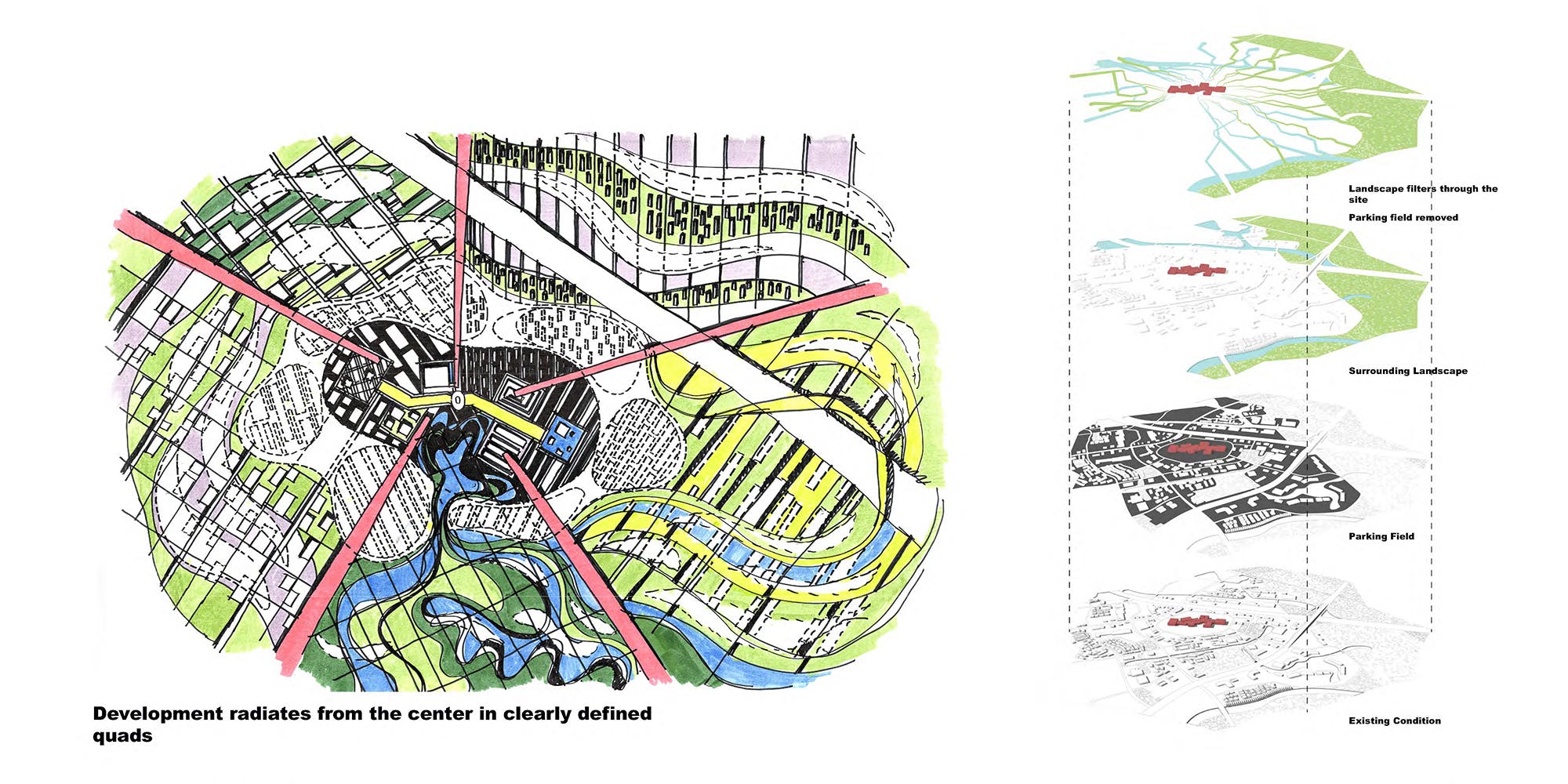
The study of Music City Mall in Lewisville was prepared as part of a series in response to our own internal study on the Mall of the Future, reflecting on the greater purpose sites such as this can play. The thinking was limitless in this case, with lessons learned as a result of not having a filter. The project was featured in ULI's fall meeting in Dallas a few years back.

Music City Mall, formerly Vista Ridge Mall, sits in a portion of the DFW Metroplex that is witnessing rapid growth. By all accounts retail in this area should be flourishing yet the mall, foreclosed in 2016, is struggling to survive. This trend is not uncommon as brick and mortar stores struggle and large scale retail growth is struggling to rise. The resulting pattern is one of catabolism. The competitive market is moving with a mobile population which, in turn, creates an often necessary competition that is rendering once prosperous properties unviable.
The trend to merely create another phase in a mall's life focused only on its current program reimagined is unsustainable.


Malls and their collective sites have a greater ability to cause change in their respective communities given their size, location, and their familiar place amongst the population at large. Malls need greater thinking on how they can change and evolve into an urban context, visioning program and function in a way that responds to demographic and economic shifts. Above all, sprawl can trade for density and ecology, aiding in the healing of landscapes and ecosystem.




For Vista Ridge, the proposal was for the mall to remain as a remnant of what was in the form of an urban park. The mall program lining the circulation spoke and hub is systematically disassembled and re-used amongst the site for for future use. Anchors are transformed into flexible incubators, throwing out the single-minded retail function for one focused on innovation and exploration. These nodes become the catalyst for future growth.

 As the mall evolves into a regional center, the outlying big box landscape is transformed and absorbed into a dense fabric. Outlying areas return to the natural Trinity River watershed and contribute to the region's overall ecology and flood control.
As the mall evolves into a regional center, the outlying big box landscape is transformed and absorbed into a dense fabric. Outlying areas return to the natural Trinity River watershed and contribute to the region's overall ecology and flood control.
Over the period of 80 years the site becomes a regional center once again in line with the influence the mall itself once served during its period of prosperity. Other malls around the region follow suit, creating a network of communities that communicate and grow together for the better of the region.



Status: Competition Entry
Location: Lewisville, TX, US
Role: Design Lead
Additional Credits: CRTKL
Team: